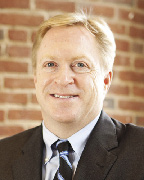You may not think of them often, but your life is highly reliant on data centers. Data centers house computer systems. They store the kind of things that play a large role in our daily lives - photos on Facebook, videos from YouTube or articles from Wikipedia. They're crucial to nearly every sector of the U.S. economy, including financial services, high tech, media, universities, and government institutions.
Storing all this information takes up a lot of energy. A report by the Environmental Protection Agency in 2007 estimated that data centers accounted for 1.5% of total U.S. electricity consumption for a total electricity cost of about $4.5 billion. That's more than the electricity consumed by every color television in the U.S. The same report stated that Federal data centers alone consumed $450 million worth of electricity annually.
By 2006, data centers were consuming more than double the electricity they had in 2000.
The fact remains that we need data centers, but we need them to be energy-efficient and green. Here in Mass., we are on the forefront of building data centers that house essential electronic information while remaining highly sustainable.
Green data centers aren't just good for the environment - they're good for business. When planning green buildings, we often encourage our clients to think in terms of a building's life cycle. Extra sustainable measures may require an additional upfront investment, but they often pay off in the end. This is true not just in terms of the environment, but also in actual dollars saved, frequently in energy costs. The same applies to green data centers, a lesson that the Commonwealth of Mass. is learning with its Springfield Data Center.
The Springfield Data Center will save the state approximately $3 million a year in energy costs when it becomes fully operational in May of 2012. The facility will serve as a secure home for the state's electronic records and data systems while also providing critical backup for the Commonwealth's existing primary data center. The $110 million facility will use cost-competitive energy sources with a green edge.
It will capture and re-use rainwater, take advantage of natural sunlight for staff areas and use existing materials from the site's previous building in the construction - the site was formerly the Technical High School, which closed in 1986. The data center will feature energy efficient data center infrastructure, including fresh air-cooling, EnergyStar servers and an advanced energy management system.
By building from the ground-up with highly sustainable measures, the SDC will be among the most energy efficient data centers in the country and will serve as a national model for green technology. That's exactly where we need it to be.
Paul Hewins is general manager and executive vice president for Skanska USA's New England region, Boston.
Tags:







